Does playing winter ball give a player an advantage heading into spring training and the upcoming season?
Sure, playing winter ball doesn’t hurt (unless a player actually gets injured like utility fielder Whit Merrifield did after about a week in Mexico). It allows a player to already be in playing shape when spring training starts (if that player played winter ball until the end of the season). An American player gets the opportunity to experience a new culture. Each and every players gets a chance to play in front of crowds bigger and louder than what they are used to playing in front of at the minor league level. Kansas City Royals Director of Minor League Operations Ronnie Richardson called winter ball the fans’ “Super Bowl. Every game, it’s a lot of energy and a lot of people there”.
Which Royals minor league pitchers helped themselves heading into spring training?
Side note: I did not attend a winter league game, so I did not see any of these players in person over the winter. I am just going by each player’s overall numbers. Numbers don’t always tell the whole story.
Blue Rocks starter Miguel Almonte against Salem on May 12, 2014 (Jen Nevius).
In my interview with Richardson, he talked about how impressed the Royals were with right-hander Miguel Almonte‘s winter ball performance. I thought maybe Almonte had a chance at repeating High-A Wilmington in 2015 (at least to start the season), but now I think he will be in Double-A.
Almonte started his offseason in the Arizona Fall League, where in seven games (four starts) he had a 2.84 ERA. Though the hits allowed were a little high in 19 innings (16 including two home runs), he also walked nine and hit three.
Almonte then went home to the Dominican Republic, took some time off, and got back on the mound for four games (three starts). In 19.1 innings for Dominican Winter League Champion Gigantes, he allowed just ten hits and walked six, while striking out 19. He carried a 1.40 ERA and an 0.83 WHIP. Almonte should head to spring training with a lot of confidence.
Fellow right-hander Jandel Gustave was a teammate of Almonte’s in the DR. The youngster has a lot to prove in spring training being a Rule V pick and all. However, he had a pretty dominant ten games in winter ball.
Though the walks were a little high (five in 14 innings), Gustave held opponents to a .200 batting average and had a 1.93 ERA. He struck out ten and had a WHIP of 1.07.
Michael Mariot didn’t hurt his cause at trying to win one of the few open bullpen spots by playing winter ball. He did have a 3.00 ERA in seven games for Gigantes, but that was hurt by one game in the regular season when he gave up runs (and another in the postseason). In six innings, he gave up three hits (a .143 average) and did not walk a batter (WHIP of 0.50). Mariot did strike out seven.
More from KC Royals Prospects
- The Maikel Garcia mistake the KC Royals may be making
- KC Royals Prospects: 7 selected for Fall League play
- KC Royals Prospects: What to do with Stephen Woods Jr.?
- KC Royals: 3 good candidates for 2 September callups
- KC Royals Prospects News: Top draft pick is sizzling
It is tough to make an Opening Day roster when you are a non-roster invitee, but
Brian Broderickhad an impressive showing in Mexico. The Royals traded for Broderick and maybe his dominance in winter ball had something to do with it. In 25 games, he converted 16-of-17 save opportunities, had a miniscule 0.68 ERA, and held opponents to a .176 average. That batting average equated to 16 hits allowed in 26.1 innings and zero home runs. What was even better was that Broderick walked just two while striking out 23. Oh and he induced five double plays.
Lefty Buddy Baumann put up solid numbers at Triple-A Omaha in 2014 but did not even get a September callup. So he went to Venezuela to improve his chances of some big league innings. In eight games (three starts), opponents hit just .208 against him, but he did walk 11 and hit one in 19.2 innings. Baumann did strike out 17.
Fellow lefty Scott Alexander is also a non-roster invitee to big league camp. He held opponents in the DWL to a .188 average and struck out ten in ten innings. However, he walked seven and finished with a 5.40 ERA. Three of the six hits and all three runs he allowed in winter ball (including his only home run) came in 2/3 of an inning on November 14th (which is why his ERA is so high).
Yohan Pino pitched in Venezuela, but not after the Royals signed him. In eight appearances (totaling ten innings), Pino allowed 11 hits and walked two, while striking out six. He limited the damage in his outings, as he only had a 1.80 ERA.
Right-hander Andrew Triggs, a closer-type who can pitch multiple innings, lasted just three games in the DWL. Over just 1.2 innings, he allowed four runs and eight hits and a walk.
J.C. Sulbaran only lasted four starts in the Venezuelan Winter League. He allowed 11 runs on 18 hits (two homers) in 17 innings. He walked five, struck out 13, and threw two wild pitches.
Whether these pitchers use their winter ball success as an advantage is yet to be seen. Spring training is a great time to show that the success wasn’t a fluke and that their winter ball failures were a fluke.
Check back next week for a look at the Royals position players and their winter ball stats.
